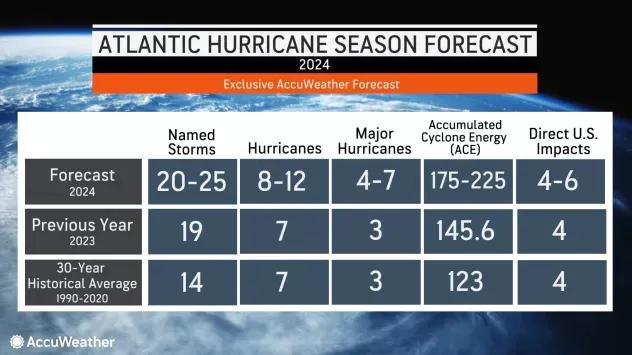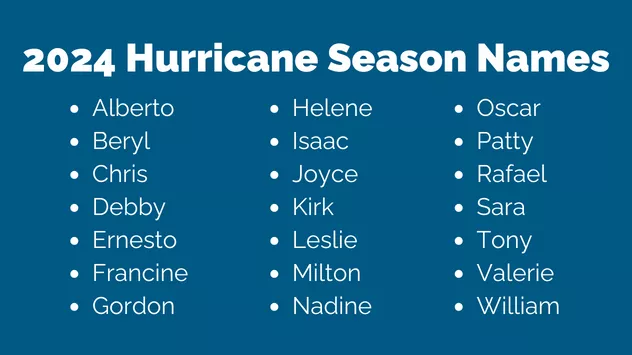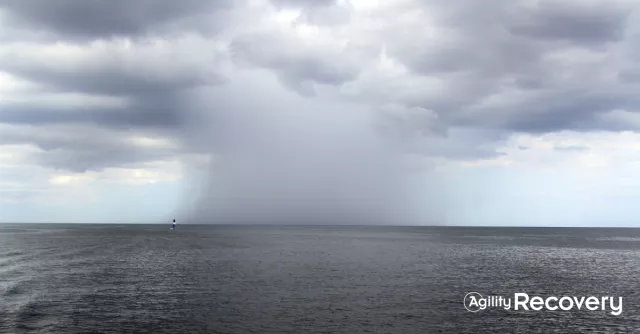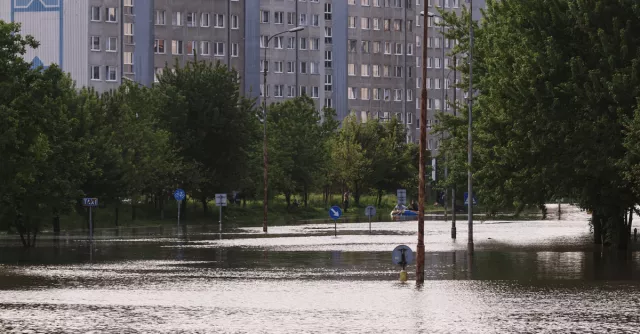2024 Hurricane Season Predictions: What Businesses Need to Know
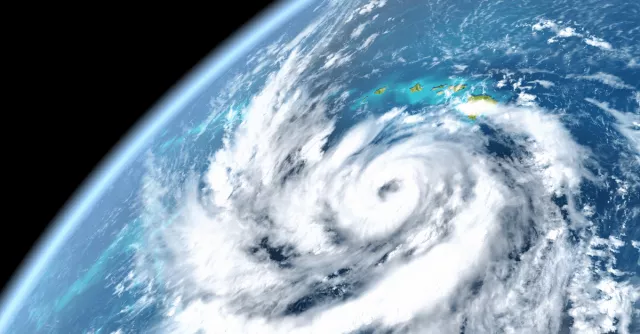
We will update this blog with up-to-date predictions throughout the hurricane season. Bookmark it now, and subscribe to our weekly newsletter for the latest. Last updated April 9, 2024.
This year, the National Oceanic and Atmospheric Administration (NOAA) is predicting an above-average season, with up to 19 named storms, 9 hurricanes, and 4 major hurricanes. AccuWeather agrees, "forecasting 20-25 named storms across the Atlantic basin in 2024, including 8-12 hurricanes, four to seven major hurricanes and four to six direct U.S. impacts." This article will cover when hurricane season is, what regions are impacted, predictions for the 2024 hurricane season, learnings for businesses from past hurricane seasons, and how businesses can prepare for the 2024 hurricane season.
When Is Hurricane Season and Which Regions Are Impacted?
The Atlantic hurricane season, which officially begins on June 1 and concludes on November 30 each year, is a period of heightened activity during which tropical cyclones, including hurricanes, are most likely to develop over the Atlantic Ocean. Historically, peak activity occurs in August and September.
The areas that are most frequently affected by hurricanes are located near the Atlantic Ocean and the Gulf of Mexico, including the southeastern and coastal states of the United States, as well as Mexico, Central America, and the Caribbean islands. These regions bear the brunt of severe weather conditions such as torrential rainfall, high winds, storm surges, flooding, and significant property damage.
Businesses located in hurricane-prone regions must be well prepared to minimize disruptions and ensure their safety during the hurricane season. Proper preparation involves staying informed about hurricane forecasts, developing comprehensive disaster response plans, and implementing measures to protect employees, property, and assets.
2024 Hurricane Season Predictions
As the 2024 hurricane season approaches, experts are predicting another active year in the Atlantic basin. The National Oceanic and Atmospheric Administration (NOAA) recently released its initial forecast, calling for 14 to 21 named storms, with 6 to 10 of them becoming hurricanes, including 3 to 6 major hurricanes with winds of 179 mph or higher. Colorado State University predicts, with "above-normal confidence," a "well-above average probability for major hurricanes making landfall along the continental United States coastline and in the Caribbean," with 23 named storms.
These numbers are above the 30-year average of 14 named storms, 7 hurricanes, and 3 major hurricanes. The Texas coast, Florida Panhandle, South Florida, and the Carolinas are most likely to experience direct hits.
AccuWeather meteorologists, too, warn of increased activity and the potential for a "blockbuster" hurricane season and "forecasting 20-25 named storms across the Atlantic basin in 2024, including 8-12 hurricanes, four to seven major hurricanes and four to six direct U.S. impacts." This is due to several factors, including:
- Favorable oceanic and atmospheric conditions
- Warmer-than-average sea surface temperatures: Mid-February Atlantic water temperatures were the same as those typically experienced in July and temperatures at the end of January were 65% higher than the next closest year
- Reduced wind shear as El Niño transitions to La Niña
These conditions could create a conducive environment for the formation and intensification of hurricanes, potentially leading to more frequent and powerful storms. If La Niña doesn't officially develop until August or September, the fall months will see the highest hurricane activity.
Furthermore, long-term climate change remains a significant factor, driving sea levels higher, intensifying storm impacts, and making coastal communities more vulnerable to severe hurricane damage. NOAA emphasizes the continued significance of ongoing monitoring, planning, and preparedness measures to minimize the potential damage and risks associated with the 2024 hurricane season. While this initial forecast provides a general outlook, the specific tracks and intensities of individual storms can only be forecasted closer to the time of their formation.
2024 Hurricane Names
The 2024 hurricane names list has been released by the World Meteorological Organization (WMO):
These names will be used when tropical storms and hurricanes develop in the Atlantic Ocean and Eastern Pacific Ocean during the 2024 season.
The list of names is generated by the WMO's Hurricane Committee, which consists of representatives from all the countries in the Atlantic and Eastern Pacific hurricane basins. The committee meets every year to review the previous hurricane season and make recommendations for the next one. The names are chosen from a rotating list of English, French, Spanish, and Portuguese names. Names that have been used in previous years are retired from the list, and new names are added to replace them.
In the event that all names are used, the WMO will turn to supplemental lists.
Lessons from Past Hurricane Seasons
The impact of past hurricane seasons on businesses provides valuable lessons for proactive preparedness.
Importance of Real-Time Data
One significant learning is the importance of continuous monitoring and real-time information. Businesses that invest in robust weather tracking and monitoring systems can stay ahead of developing weather patterns and make informed decisions based on reliable forecasts. Real-time data empowers them to take timely actions such as implementing emergency response protocols, evacuating personnel, or securing critical infrastructure, minimizing potential damage and disruptions.
Need for Thorough Disaster Recovery and Business Continuity Plans
Past hurricanes also highlight the need for robust disaster recovery plans that ensure business continuity. Companies should proactively collaborate with relevant stakeholders to develop comprehensive plans that address every aspect of post-hurricane recovery. This includes assessing potential damage, outlining restoration procedures, securing supply chains, and establishing backup facilities. By doing so, businesses can mitigate downtime and restore operations swiftly, reducing financial losses and maintaining customer satisfaction.
Establishment of Effective Emergency Communication
Furthermore, past hurricanes have highlighted the significance of effective communication during emergencies. Establishing clear communication channels and protocols ensures that all employees receive timely updates, instructions, and safety guidelines. Businesses should regularly conduct drills and training sessions to ensure that employees understand and adhere to these protocols, enhancing overall safety and minimizing confusion and panic in critical situations.
Maintenance of Records and Documentation
Lastly, post-hurricane recovery often involves interactions with insurance companies, government agencies, and various contractors. Businesses that maintain accurate records and documentation, including photographs, estimates, and receipts, streamline the claims and reimbursement process. Proactively assembling these records can significantly expedite the recovery process, reducing financial burdens and facilitating smoother operations.
How to Prepare for the 2024 Hurricane Season
As the 2024 hurricane season approaches, businesses must take proactive measures to ensure their continued operations and protect their assets. Here are some essential steps that businesses should consider to prepare for the upcoming hurricane season.
1. Establish a Hurricane Readiness Plan
Develop a comprehensive hurricane preparedness plan that outlines specific protocols and procedures to be followed before, during, and after a hurricane. Clearly define roles and responsibilities for employees, ensuring that everyone knows their tasks and has access to necessary resources. This plan should include steps such as securing facilities, managing inventory, and maintaining communication channels.
2. Invest in Disaster Preparedness Supplies
Stock up on essential disaster preparedness supplies such as flashlights, batteries, non-perishable food, and water. Ensure that your business has sufficient supplies to sustain operations and support employees in the event of a prolonged power outage or disruption of supply chains.
3. Secure Physical Infrastructure
Conduct a thorough inspection of your business premises to identify potential vulnerabilities to hurricane damage. Reinforce or repair any weak points in the structure, including roofs, windows, and doors. Trim trees and branches near your property to minimize the risk of damage from falling debris.
4. Protect Critical Data and Equipment
Back up critical business data regularly and store backups off-site to protect against data loss in case of flooding or severe damage. Consider investing in surge protectors and power generators to keep essential equipment operational during power outages.
5. Plan for Evacuation and Employee Safety
Develop an evacuation plan that outlines the designated evacuation routes and assembly points for employees. Ensure that employees are familiar with the plan and know how to reach these designated locations quickly in case of an emergency. Regularly conduct evacuation drills to ensure that employees are prepared and can respond effectively.
6. Foster Effective Communication
Establish clear communication channels to keep employees, customers, and suppliers informed about your business status during a hurricane. Regularly update your website, social media platforms, and designated communication channels with accurate and timely information.
Don't forget remote and hybrid employees; ensure you have a way to communicate with anyone in the storm's path and confirm their safety.
7. Educate Employees Through Training and Exercising
Conduct training sessions for employees to educate them about hurricane risks and safety measures. Emphasize the importance of staying informed, following instructions, and being prepared at all times.
Beyond training sessions, your organization should exercise its preparedness plans through tabletop or live tests to make sure everyone understands their roles and identify any gaps in the plans.
8. Coordinate with Local Authorities
Stay informed about local hurricane preparedness plans and guidelines, as well as relevant regulations and restrictions that may be imposed during a hurricane event. Build strong relationships with local emergency management agencies and community organizations to access critical resources and support when needed.
By taking these proactive measures, businesses can significantly enhance their preparedness for the 2024 hurricane season, minimizing potential disruptions, and safeguarding their operations, employees, and assets.
